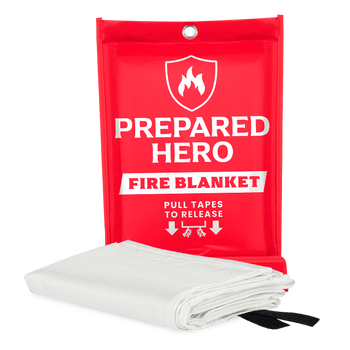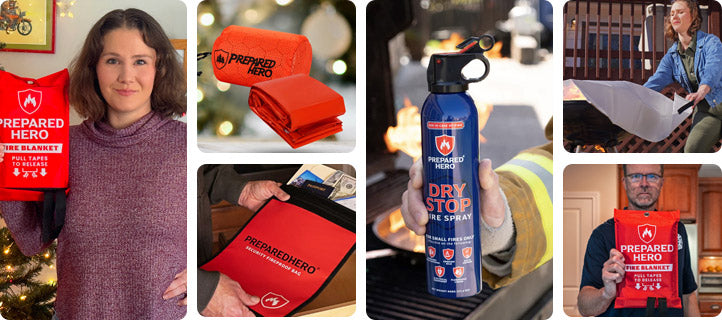According to the Environmental Protection Agency, climate change causes longer and more intense wildfire seasons. As a result, fires are...
Hiking is an amazing way to enjoy the great outdoors, but you must prioritize safety to ensure a fun and accident-free experience. Whether you're a seasoned hiker or new to the trails, following these seven tips for hiking safely helps you enjoy your adventure to the fullest.
1. Check the weather.

Choosing a day with good weather ensures a great hiking experience. Remember, poor weather conditions often cause accidents or make your hike miserable.
Even if you plan to hike rain or shine, check the weather so you can bring the gear you need to stay safe and dry.
2. Bring the essentials.

Your hiking kit depends on how many hours or days you're hiking, where you plan to sleep, and what time of year it is. Here are some essentials you should bring with you:
- Hiking first aid kit
- Navigation tools like map, compass, and GPS
- Sunscreen
- Flashlights or headlamps
- Fire starters like matches and lighters
- Multifunctional repair tool
- Food
- Water
- Emergency shelters like tents and survival bags
Do you want to know how to build a kit if things don't go well? Check out this wilderness survival kit list.
3. Use proper clothes and footwear.

Using footwear with excellent cushion and grip is crucial for avoiding accidents. Doing so will also help you avoid getting blisters.
If you don't know where to start, consult an expert at a hiking or outdoor supply store. After that, test your boots around the house and/or on a trial hike.
You should also wear moisture-wicking clothes to prevent excessive sweat. Choose a lightweight, breathable shirt and durable, flexible shorts or pants. Lastly, bring a jacket or rain poncho in case the weather changes.
4. Pace yourself.

Rushing the hike to get to the waterfall, summit, or any destination can ruin your hiking experience. On the other hand, moving at a pace you're comfortable with, enjoying the scenery, and stopping for breaks let you enjoy the hike.
5. Protect yourself from the sun.

Experienced hikers usually set out in the early morning or late afternoon to avoid the peak hours of sun and heat. Wear broad-spectrum sunscreen, a hat, and sunglasses to protect yourself from the sun's UV rays.
6. Stay on the trail.

When you don't follow the path, your odds of encountering an accident or getting lost go up. Veering off the trail also leads to social trails, which are unofficial routes forced into the wild by wayward hikers. Social trails can ruin vegetation, disturb wild animals, and endanger other hikers who might think it's the right trail.
7. Be ready to turn back.

You can do everything right, but when things don’t go well, you must be willing to turn back.
Plus, you're more likely to make a poor call, like ignoring breaks and pressing on when a storm is coming when you're too focused on getting to your destination.
It's easier to be flexible if you think reaching your destination isn't everything. Remember that you're hiking to enjoy yourself. Take any obstacle as a great opportunity to enjoy nature, and don't hesitate to turn around when needed.
Conclusion
Checking the weather, packing essentials, wearing the right gear, pacing yourself, protecting yourself from the sun, staying on the trail, and knowing when to turn back are all crucial for a memorable hike. Stay safe, hero!


 Fire
Fire Safety
Safety Survival
Survival Protection
Protection New
New
 Fire
Fire Safety
Safety Survival
Survival Protection
Protection New
New












